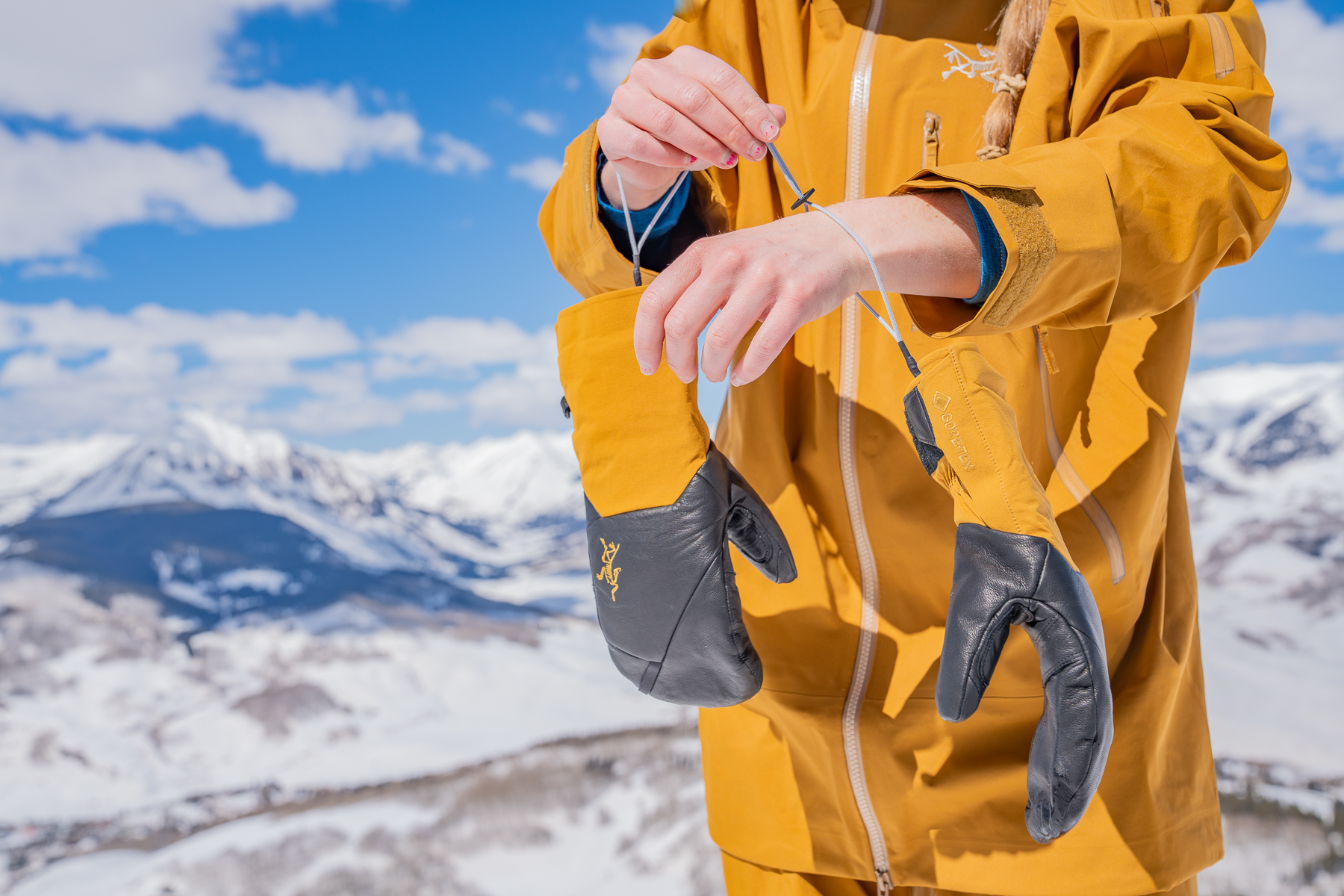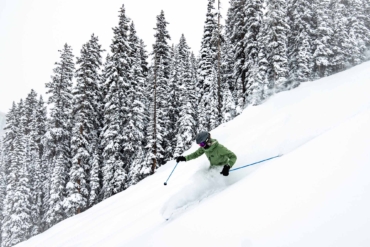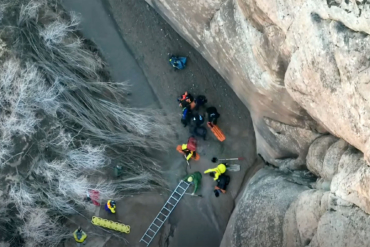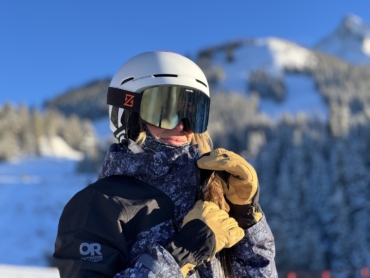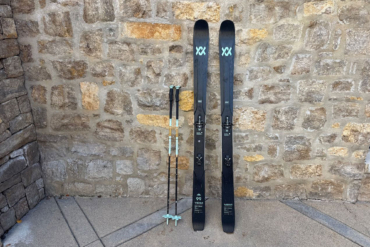Want to get out in weather that keeps most people cocooned in their beds? Here’s how to stay warm and prepare to spend the day hiking in a winter wonderland.
Venturing out into a frozen forest requires a little extra diligence than a warm-weather hike. Cooling off in the summer is easy: Just pour some water on your head, and you’re good to go. But if you’re not fireside in the winter, the only heat source is the body — and keeping it warm and adequately hydrated is paramount.
Winter Dayhike Pack List
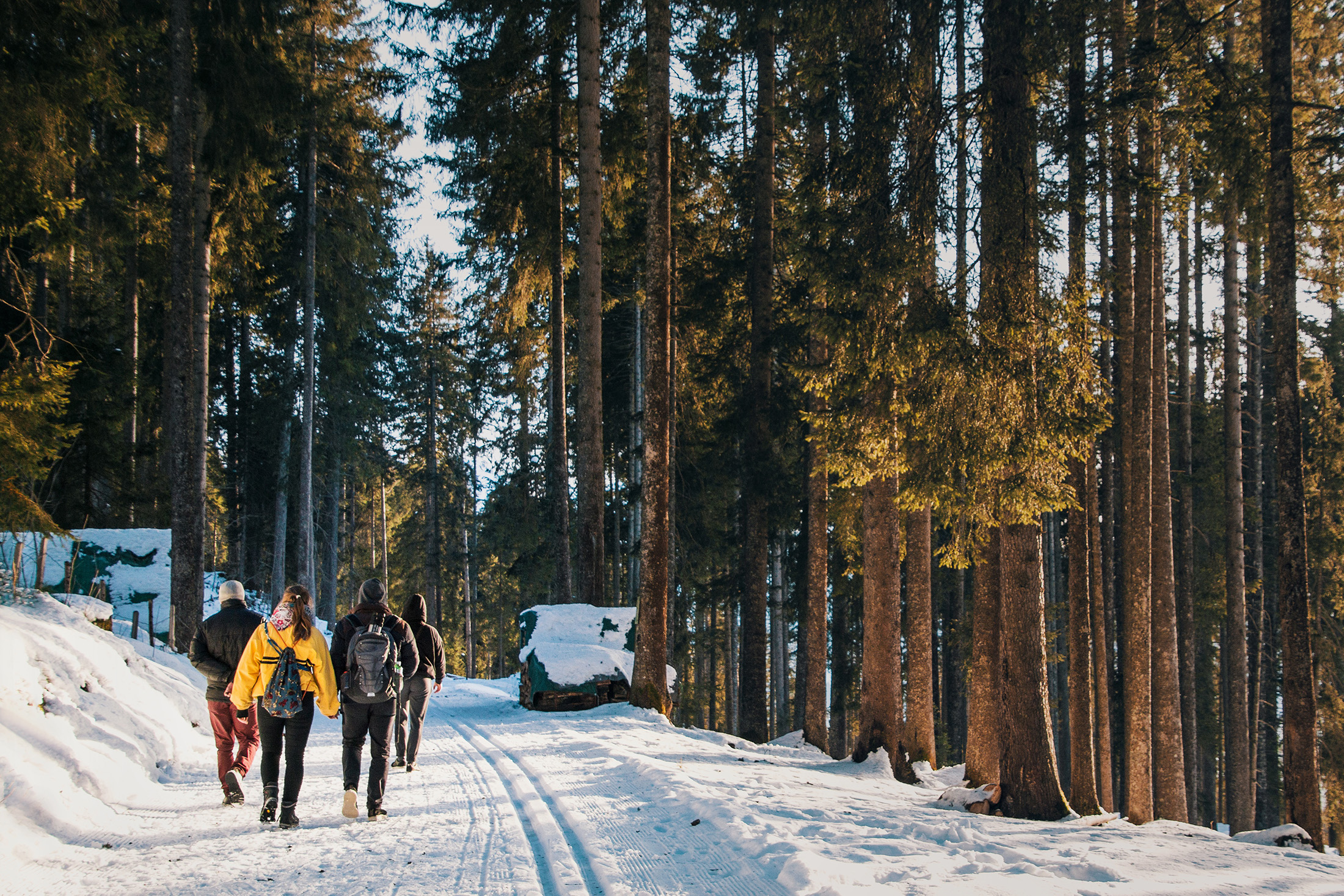
Food & Water
Fatigue makes hypothermia more likely, so stay fueled. Bring foods like apples, granola bars, trail mix, and peanut butter sandwiches.
Although the sun may not feel like it’s baking you as much, proper hydration is just as crucial in the winter months, especially at high altitude. A hydration pack, which frees up the hands from carrying water bottles, is an easy way to ensure you get enough water.
High Sierra’s Hydrahike hydration packs — 8L ($38), and 16L ($48) — are a good option. Both packs have a 2L water bladder, adjustable chest and hip belts, padded mesh back panel and shoulder straps for airflow, reflective details, and an organizer compartment.
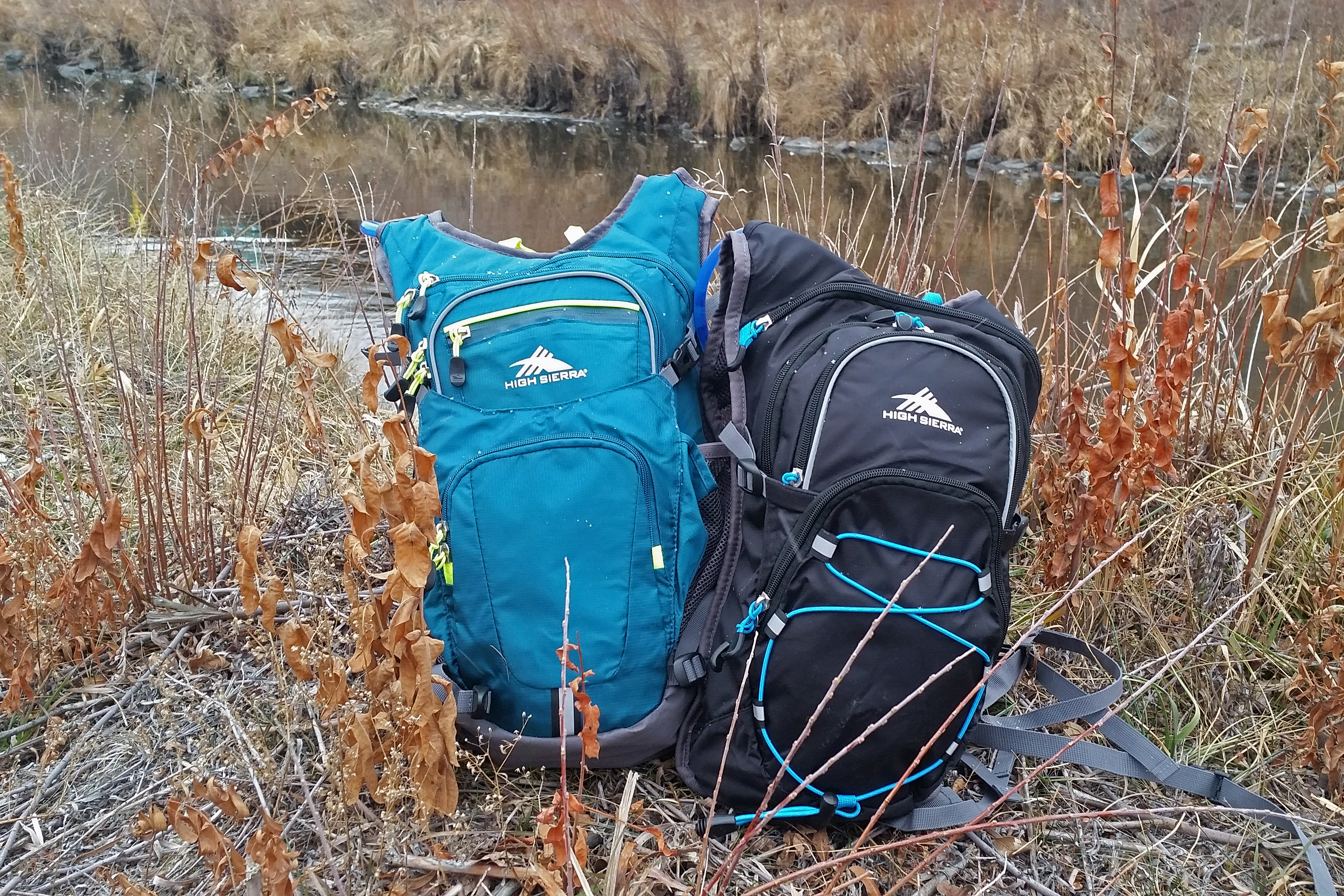
They’re well-suited to hikes in temps above -5 degrees F. Any colder, and the water will freeze inside the hydration bladder. However, water can also quickly freeze in exposed hoses. Blow water back into the bladder after drinking to keep the hose free-flowing and ice-free.
Attire
Layer up in light, warm fabric; do not wear cotton. Cotton doesn’t dry quickly and can retain moisture near the body. Cold and wet do not mix — unless you want hypothermia.
Besides that, frostbite is always a concern when outside in frigid temps. To prevent frostbite, make sure as little skin as possible is exposed to the elements. Redness, numbing, and tingling — which first appear on the ears, cheeks, nose, fingers, and toes — are all early warning signs.
Wear a hat that covers the ears, a fast-drying base layer (not cotton), a midlayer, outerwear, a neck warmer/scarf/gaiter, wool socks, and waterproof boots and mittens. Using mittens instead of gloves keeps fingers warmer.
It’s also a good idea to bring an extra pair of wool socks in case of cold or wet feet. And for people with low circulation who are prone to cold digits, those shakeable warming packs work well in gloves and boots.
Sun, Safety & Navigation
As with hydration, protecting the skin from the sun matters just as much in cold weather as in hot. Wear sunglasses that cover a large portion of the face, plus sunscreen on the entire face and any other exposed skin.
First aid should always be a top priority in the outdoors. Take a small first-aid kit for any unforeseen cuts, scrapes, or emergencies.

On a day hike, satellite navigation probably isn’t necessary — especially if you bring a friend who can help in the event of an injury or emergency. But if you already have a navigation device, sure, bring it along. Otherwise, at a minimum, carry a fully charged cellphone and keep it in a warm, interior pocket.
Optimize Pack Space
Stuffing a pack for a winter hike is all about two things: accessibility and weight balance.
First things first: When using a hydration pack, don’t store any sharp objects in the main compartment that houses the water bladder. The last thing a winter hiker wants is a leak.
Pack the most-used items — first-aid kit, food, extra water and socks, cellphone, navigation device — near the top or in smaller zipper pockets.
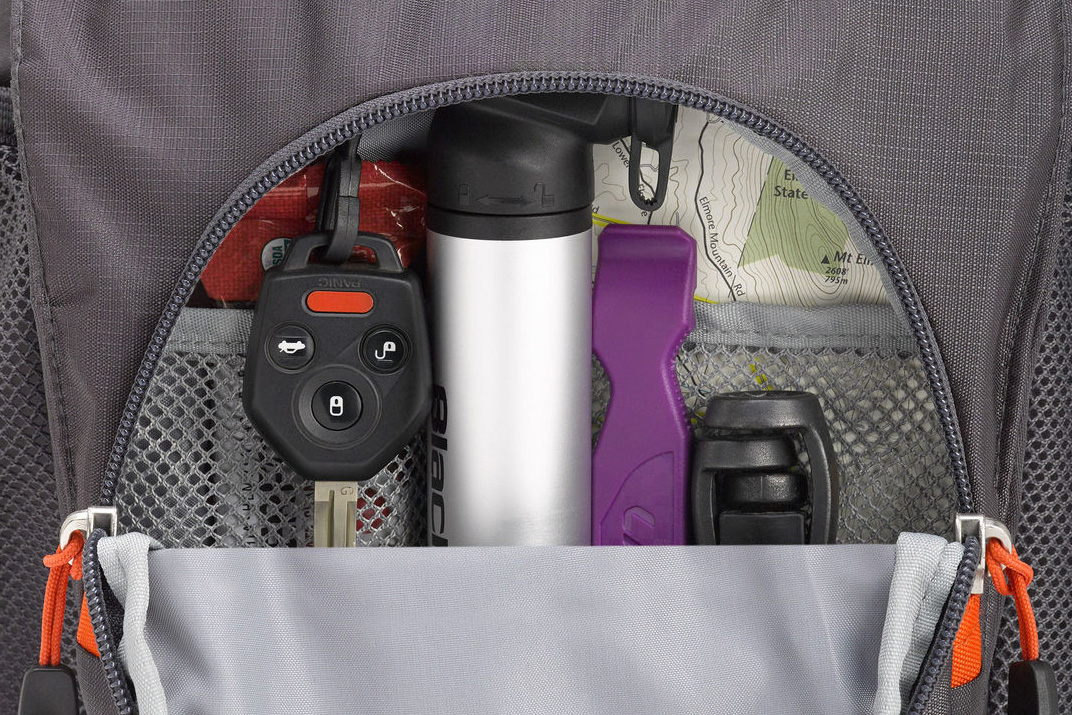
The electronics pocket on the Hydrahike 16L, above the organizer compartment, can be used for a headlamp, flashlight, and satellite navigation or emergency beacon.
Place the largest, heaviest items low down and up against your back. The firm, ventilated back panels on the packs ease carry and prevents any irregularly shaped items from poking out.
When full, add water bottles to dedicated exterior pockets if you’re going for a longer hike. Hard-sided bottles are fine, but collapsible containers are super convenient because once they’re empty, you can easily stash them away to create more space. A tip in cold weather is to add hot water to the bottles, as it’ll take longer to freeze.
Winter Pack Wrap
Don’t let the extra precautions of winter hiking scare you away. Tis the season for a thinner hiking crowd, meaning greater chances of having the trail all to yourself.
Just cover exposed skin and layer up to insulate the body. Keep cotton off your back and plenty of water securely in your pack. You might surprise yourself with how long you can — and want — to stay out in the snow.
This post is sponsored by High Sierra. See the entire line of Hydrahike hydration packs here.


